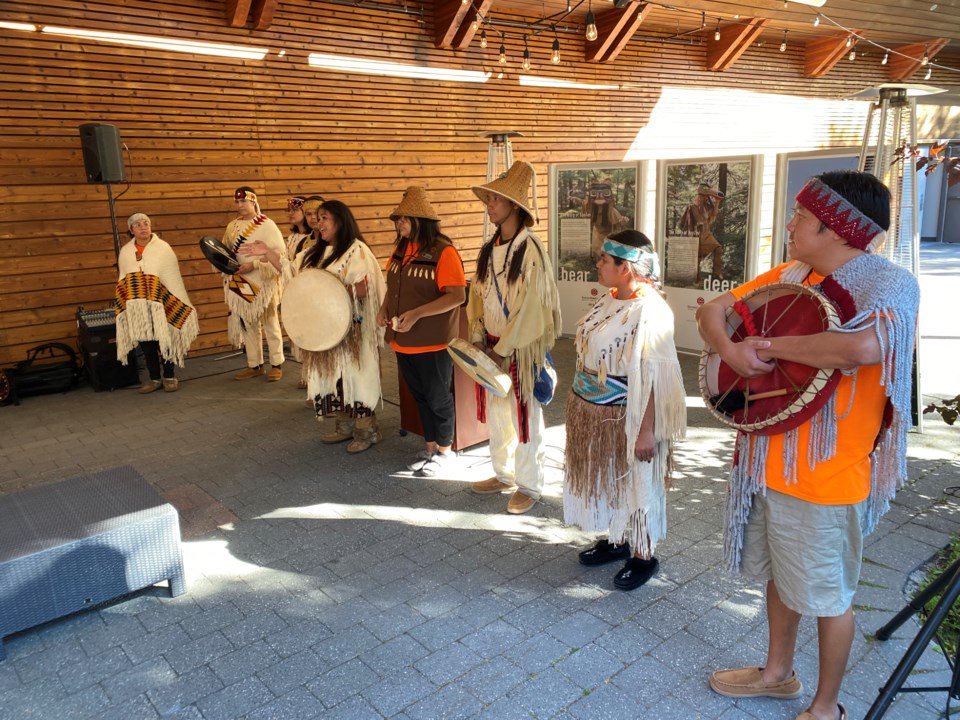There’s a quote about reconciliation, attributed to Gwawaenuk Nation Chief Robert Joseph, that Squamish Nation Councillor Khelsilem likes to share.
“He said, ‘Reconciliation is a journey, always beginning with the first step, and when that step is completed, you take the next,’” Khelsilem said, at the Squamish Lil’wat Cultural Centre’s National Day for Truth and Reconciliation event on Sept. 30.
“’The journey unfolds bit by bit, block by block. When that rhythm kicks in, you know that the process of reconciliation is underway.’”
If you had asked me 15 years ago, I wouldn’t have understood what Joseph—a residential school survivor himself—really meant with these words. But I think I get it now.
On the face of it, it’s a somewhat simple approach to a complex, challenging topic—one with no clear guidelines or rules for engagement; no right approach or prescriptive method.
The legacy of Canada’s Indian Residential School System—which, for decades, forcibly removed Indigenous children from their homes with the express intention of stamping out their culture—goes far beyond survivors, or even their children or grandchildren, Khelsilem said in his remarks.
It also plays a fundamental role in Canada’s nation-building story.
“There’s a lot to be said around the cumulative impacts of that system on our communities that we are still dealing with today,” he said. “But there is a path that’s been laid out by leaders from our communities, survivors within our communities, around the better future that so many of our elders have wanted to create for their children and their grandchildren and their great grandchildren, and I think that that is a value that is found in cultures all around the world.”
And reconciliation has many different meanings to many different people, Khelsilem added—many different paths forward, with all of us moving at a different pace.
But, as Joseph said, every journey starts with a single step.
I will always remember the day I took mine.
It was the spring of 2011, and I was enrolled in a two-week journalism bootcamp at the First Nations University of Canada in Regina.
One day, I was invited to take part in a traditional pipe ceremony. Having no idea what that was, or why it was important, I was hesitant at first. But I said yes.
Ushered into the First Nations Veterans Memorial Teepee—a beautiful glass, indoor structure at the university—I chose a spot near an Indigenous friend on the outside of the circle, immediately showing my ignorance. She laughed at me playfully, pointing out that, in pipe ceremonies, the men sit in a circle on the inside of the teepee, while the women sit in a circle around the edges.
The ceremony hadn’t even begun, and I was learning.
As an elder recited prayers, we took turns smudging with sweetgrass smoke (cupping smoke from the burning grass, and “washing” our faces with it), before the men passed the pipe amongst themselves.
I sat there silently, listening to the prayers of the elder, smoke rising from our circle to the heavens.
I remember feeling both moved and humbled at being welcomed into this ancient tradition, but I also felt embarrassed, and weirdly jealous—because I suddenly realized that I had no similar connection to culture of my own.
There I sat, just another ignorant white man, devoid of culture or connection to the land or his ancestors, bumbling his way through a charmed and privileged life.
And then I just felt sort of empty and sad.
I didn’t know it at the time, but looking back on it now, that was my first real “reconciliation moment”—the realization that I truly didn’t know what I didn’t know, and maybe never would. All I could do was keep trying.
It was such a beautiful, solemn and timeless thing that I was invited into there, after growing up surrounded by—and sometimes, ashamedly, participating in—casual racism.
It signaled a small but fundamental shift in my underlying psyche—and the first step on my own personal journey of reconciliation.
It is a journey that continues today.
As SLCC curator Mixalhítsa7 Alison Pascal wrote in a recent letter to Pique, Truth and Reconciliation is not a one-day-a-year affair. This publication is not perfect on that front, nor am I. We all have our blind spots. Part of reconciliation is admitting that, and when we need to do better.
Part of it is understanding that all of this is so much more than just a catchphrase and a day off—it’s a long and winding uphill road that we’re all walking together, whether we know it or not. There will be setbacks and detours along the way, but that’s OK, as long as we stay committed to listening and learning as we go.
As Khelsilem said, reconciliation means different things to different people.
To me, it’s less of a concrete, quantifiable concept and more a state of mind—an acceptance of my own shortcomings, and a willingness to slow down and listen.
If you haven’t begun your own journey yet, that’s OK, too. There’s no time like the present, and you can start by asking yourself a simple question: do you know what you don’t know?
Go ahead, ask it—you might be surprised (and possibly completely overwhelmed) by the answer.




